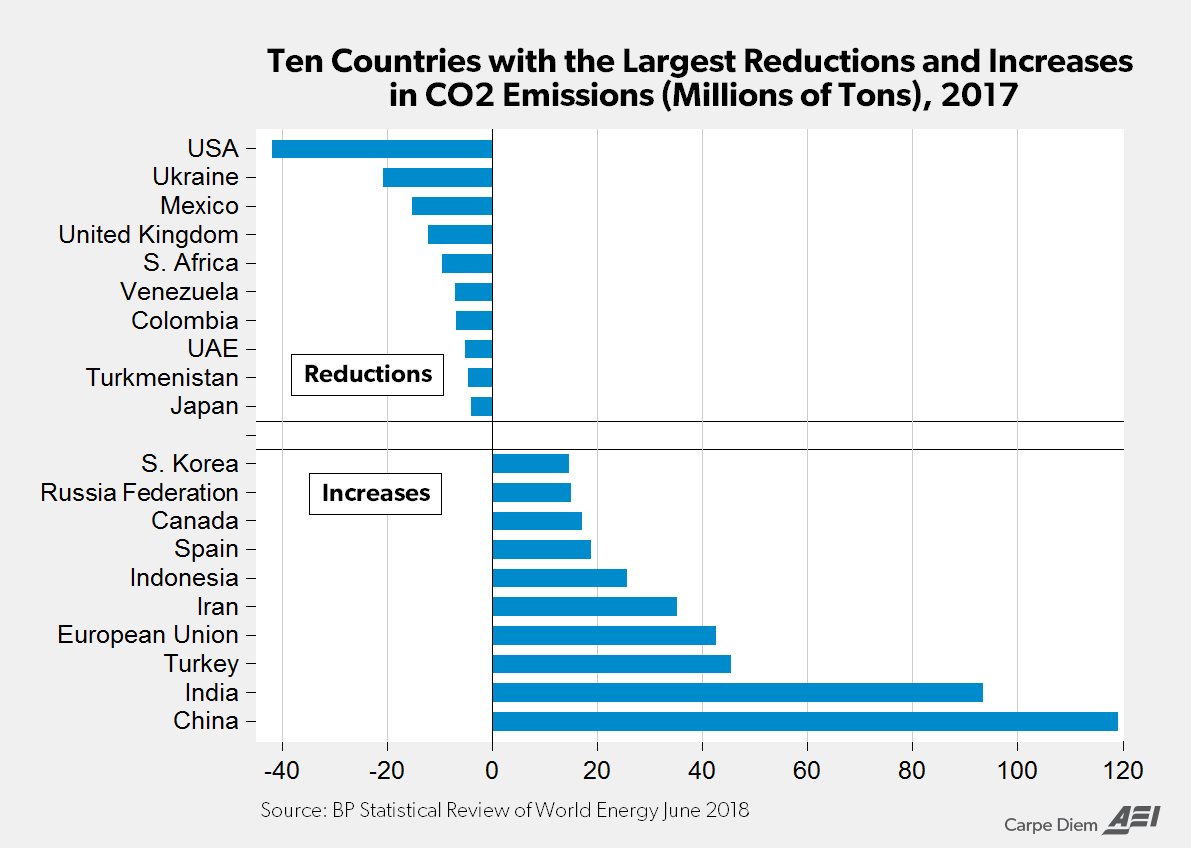 The Paris climate accord, that is.
The Paris climate accord, that is.
Apparently, the United States is doing just fine without it. Hunter Lovell of the Washington Free Beacon explains.
The United States in 2017 experienced the largest decline in carbon emissions in the world, according to a recent report.
The American Enterprise Institute, a conservative think tank, said the U.S. last year had a growth rate in carbon emissions of -0.5 percent and a decrease of 42 million tons, citing data from oil giant BP’s Statistical Review of World Energy, published in June.
Last year marked the ninth time in this century that the U.S. has had the largest decline in emissions in the world; 2017 was also the third consecutive year that emissions in the U.S. declined, although the decline was the smallest over the three-year period.
Ukraine had the world’s second largest decline, with a growth rate of -10.1 percent and a 28.1-million-ton decrease in emissions.
Carbon emissions from energy increased worldwide last year, growing by 1.6 percent and 426.4 million tons. China led that growth, increasing its emission totals by 119 million tons at a rate of 1.6 percent. Since the turn of the century, China has had the world’s largest surges in carbon emissions all but four times.
India, which ranked second behind China last year, had led the world in growing carbon emissions from 2014 to 2016.
President Donald Trump faced severe opposition after he announced in June 2017 that the U.S. would withdraw from the Paris climate accord, saying the deal “would undermine our economy, hamstring our workers, weaken our sovereignty, impose unacceptable legal risks, and put us at a permanent disadvantage to the other countries of the world.”


